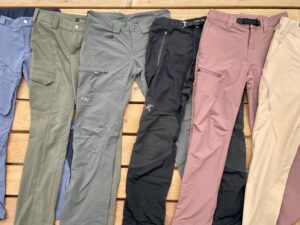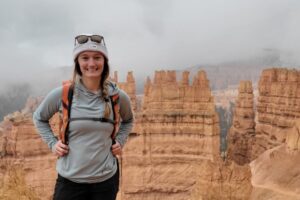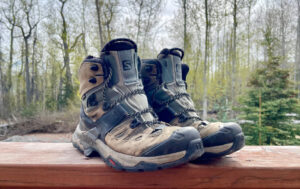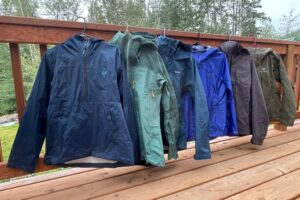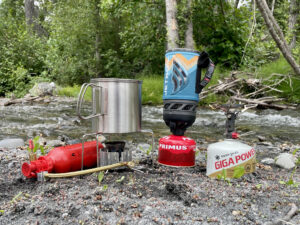When snow blankets the ground and the days are far too short, one of the best ways to get outside and stay active is to hit the slopes. But staying warm and comfortable is vital, especially while learning to ski or snowboard. But even if you bundle up with ski pants, jackets, hats, and helmets, your face is still exposed to the elements. Ski masks help protect your face from harsh wind, snow, or other precipitation, especially on those freezing chairlift rides up to the top of the mountain.
But with so many ski mask options available, finding the right one for your needs and wallet can be tricky. Luckily, many of our staff members, including yours truly, are active skiers so we know a thing or two about what makes ski masks great. After many hours of research and testing, we present our guide to the absolute best ski masks on the market.
Best fleece neckwarmer: Turtle Fur Chelonia 150 Fleece Shellaclava Ski Mask

- UPF 50+ Sun protection
- Lightweight design
- Warm and cozy fleece
- Weight: 2.56 Ounces
One of the warmest ski masks on this list, this design from Turtle Fur combines comfort with functionality. The hood part of this balaclava contains a synthetic material that provides a wind-resistant finish. It fits snugly under a ski helmet and the inside is brushed fleece and soft to the touch. The neck warmer features a double layer of soft fleece, which is what you want to cover your neck and face on the coldest days. I like this design because it converts easily into just a neck warmer, or you can pull the hood over your head to keep it in place under a helmet. But keep in mind that this ski mask is not the best for pulling over your nose since the double layer of fleece does not breathe well and can cause ski goggles or glasses to fog up a bit.
Turtle Fur also has an initiative called Project Warmth, where if you take a picture for social media and tag Turtle Fur and #projectwarmth, they will donate hats and other warm products to those in need. So you can be cozy and do good while wearing Turtle Fur. Read the in-depth review here.
See Turtle Fur Chelonia 150 Fleece Shellaclava Ski Mask on Amazon
See Turtle Fur Chelonia 150 Fleece Shellaclava Ski Mask on Walmart
Best overall: BlackStrap The Hood Ski Mask

- Hinging face coverage
- Wind-rated dual layer on face and neck
- Machine washable
- UPF 50+ protection
- Model: BS-H-BLK-p
- Weight: 4 Ounces
BlackStrap’s The Hood was the first balaclava ski mask I ever tried and is our best overall ski mask for skiing. The hinging design allows the face covering to easily pull down without messing up the fit of the balaclava. I also like the feel of the synthetic fabric. It is smooth and cool to the touch and is comfortable to wear all day. The addition of the second layer of mesh material on the face and neck area helps wick moisture from your mouth and nose and keeps you warm, even if it does stay a little damp. This balaclava fits nicely under a helmet and contains four-way stretch and anti-microbial properties. It also has UPF 50+ protection, which is essential because even on a cloudy day, snow reflects the sun’s rays. I have also found that this ski mask does not typically cause my goggles to fog up, even when the face protection is up.
Based in Bend, Oregon, Black Strap manufactures its products in the United States. The Hood is machine washable and comes with a one-year warranty. Also, The Hood comes in lots of different colors and patterns.
See the Blackstrap The Hood Ski Mask on EVO
See the Blackstrap The Hood Ski Mask on Amazon
Best merino wool ski mask: Icebreaker Oasis Wool Ski Mask

- Merino wool
- Includes ventilation flap for breathability
- Flatlock seams for comfort
- Model: 102739
- Weight: 3 Ounces
I am a big fan of wool for winter outdoor activities because it is naturally odor-resistant and wicks moisture well. Merino wool is soft to the touch, unlike a scratchy wool sweater. It’s also a natural fabric, for those that prefer to avoid synthetic or plastics. This balaclava features 200gm merino wool which makes it relatively lightweight while still insulating you. The design features a ventilation flap, which helps to release any moisture from breathing or talking. The flap allows moisture to escape out instead of going up and fogging your sunglasses or goggles.
This ski mask is longer in the front than it is in the back and some reviewers have said that if you have a long neck, it may not fully cover the back of your neck. It is machine washable but cannot be tumble dried, only line dried.
See the Icebreaker Oasis Wool Ski Mask on Amazon
Best convertible design: Cascade Mountain Tech Ski Mask

- Merino wool
- Four-in-one convertible design
- Odor resistant
- Model: AP-BAL-WL-SM
- Weight: 3.99 Ounces
This balaclava is also made out of merino wool and includes spandex for stretch. But it also has added versatility with a four-in-one design. The design of this ski mask allows you to wear it as a balaclava with your mouth and nose fully covered. Or, pull down the hinged mouth and nose cover to wear it as a hood. Then you can tuck the hood part into the neck to wear it as a face mask or a neck gaiter. The multifunctionality makes it an excellent choice for a ski or snowboard face mask.
This black ski mask needs to be hand washed to maintain its shape and comfort. It comes in three different sizes so that you can find the right fit for you and the whole family. On the downside, some reviewers say that this balaclava is not able to fully cover the back of their neck.
See the Cascade Mountain Tech Ski Mask on Amazon
Best CDC compliant ski mask: Outdoor Research Essential Ski Mask

- CDC compliant ski face mask
- Includes filters
- UPF 50+
This CDC-compliant ski mask takes a slightly different approach. This face mask provides two layers of breathable sun protective fabric and space for the included filters. Earloops and a hook and loop closure on the back allow you to secure it to your face and adjust the fit. You can tuck the bandana-style front into a ski jacket or baselayer to provide breathable protection while on the slopes.
Unlike some more typical balaclavas, this fits more loosely, taking Outdoor Research’s standard face mask and adding a bandana. It does include a nose wire for adjusting the fit. The polyester fabric dries quickly, wicks moisture, and is more durable than cotton or merino wool.
See the Outdoor Research Essential Ski Mask on Amazon
See the Outdoor Research Essential Ski Mask on Outdoor Research
Best ski mask for everyday use: Tough Headwear Heavyweight Fleece Ski Mask

- Polar fleece hood
- Adjustable toggle for fit
- Spandex mouth coverage
This fleece ski mask fits more like a looser balaclava or tighter hood. It can fit under a helmet and is a good option for those who prefer to wear a beanie or hood on the slopes. The polar fleece design wraps around your head for a cozy feeling next to your skin. The spandex mouth panel provides stretchy and breathable coverage when you need total protection. Pull and tighten the elastic toggles to keep everything warm and protected, or loosen and pull down the mouth protection to wear this more like a hood.
Many reviewers use this balaclava for everything from chilly walks, to working outside in the cold, to skiing and snowboarding. Like a sweatshirt hood, it is suitable for wearing alone, without being covered by a helmet or other hat.
See the Tough Headwear Heavyweight Fleece Ski Mask on Amazon
Best fleece balaclava: Burton Ember Fleece Balaclava

- Hinging face coverage
- THERMEX fleece
- Waterproof and quick-drying
- Model: 104711
- Weight: 4 Ounces
On the coldest days, you need a thick fleece balaclava to keep windchill out. This ski mask features a comfy THERMEX fleece that dries quickly, breathes well, and repels water. Slide it under your helmet or hat and pull up or down the hinged face coverage. Softlock seams provide a comfortable and chafe-free fit. Some reviewers say you can also wear it as just a neck warmer, but I think this one would be better suited for full head coverage as it would be somewhat bulky pulled down. It makes a great ski mask beanie because of the soft fleece fabric and cozy design.
Also, this balaclava comes with Burton’s lifetime warranty.
See the Burton Ember Fleece Balaclava on Amazon
See the Burton Ember Fleece Balaclava on EVO
Best balaclava: Tough Headwear Strike Balaclava Ski Mask

- Convertible design
- Lightweight fabric
- Wind resistant
- Mesh panel adds breathability and decreases condensation
- Model: Fba_balaclava – Black
- Weight: 2.08 Ounces
Our best balaclava for skiing, this ski mask is made of lightweight synthetic material and fits nicely under a helmet. Soft fleece lines the interior to provide a comfortable fit, while the exterior fabric is wind resistant and stretchy. The design includes hinged face coverage for comfortable use as a hood, balaclava, half mask, or neck warmer. When you pull it up to fully cover your mouth and nose, mesh panels help with breathability to keep glasses or goggles from fogging up.
Made with four-way stretch fabric, it gives a snug but very comfy fit. It helps that the material is also lightweight and wicks moisture while retaining heat.
See the Tough Headwear Strike Balaclava Ski Mask on Amazon
Best ski hood: Burton Cora Hood

- THERMEX fleece
- Drawstring for adjustability
- Over helmet design
- Model: 151981
- Weight: 4 Ounces
Are you someone who loves wrapping yourself up in a soft, cozy blanket? Well, this ski mask is pretty much a plush blanket made for being outside. It’s so soft that you might even forget you’re wearing a technical piece of gear. Plus, it looks pretty cool. This hood fits over a helmet, and you can tuck your hair inside or pull it out. But this is technical ski gear made out of THERMEX shaggy fleece, which breathes well, dries quickly, and is waterproof. A drawstring allows you to pull the hood tight or loosen it if you want to fit it over a helmet.
This popular hood enables you to meet both function and fashion while you shred.
See the Burton Ember Fleece Balaclava on Amazon
See the Burton Ember Fleece Balaclava on EVO
See the Burton Ember Fleece Balaclava on Burton
Best neckwarmer: BUFF Original EcoStretch Face Mask

- 12+ ways to wear
- UPF 50+
- Machine washable
- Year-round versatility
- Weight: 3.2 Ounces
If you are looking for a simple face mask that is versatile between seasons, look no further than BUFF’s original neckwarmer. This simple design allows you to wear it in 12 different ways, from a headband to a hood, to a neckwarmer. The low-weight fabric makes it functional during the summer as well as the winter. And the material is moisture-wicking, quick-dry, and includes UPF 50+ sun protection.
This neckwarmer is also machine washable, making it easy to bring on any adventure. As a bonus, it’s available in dozens of colors and patterns.
See the Buff Original Ecostretch Face Mask on Amazon
See the Buff Original Ecostretch Face Mask on Walmart
Why trust us
Between working at a ski resort and backcountry skiing, I have lots of experience with what gear I need on the slopes. I have tried many different ski masks and ski hoods over the years and have brought my knowledge of ski gear to this guide.
Who this is for
This guide to the best ski masks is for anyone active outside in the winter. Have you ever felt your face go numb? Wearing a ski mask can protect your face from wind, snow, and ice.
Wearing a ski mask helps you stay warm and comfortable, and many ski resorts require face protection during COVID-19. So, whether your activity of choice is skiing, running, hiking, biking, or riding a motorcycle, you need a ski mask.
How we picked
We chose the ski masks on this list by testing them or through thorough research. We made sure to include a variety of ski mask options to suit different needs and budgets.
How we tested
To make sure that the ski masks we chose were up to snuff, we wore them while skiing and snowboarding. We considered the materials, design, and comfort of the ski masks, and most importantly, whether or not they caused goggles to fog up while on the move.

Features to look for in ski masks
Material
The material of a ski mask is one of the most important things to look for since this will be what keeps you warm and comfortable out on the slopes. Look for synthetic materials such as nylon, polyester, or natural ones like merino wool. Don’t buy a cotton face mask, as cotton absorbs moisture and becomes cold and uncomfortable. If you are always hot, you should look for a thinner ski mask, while if you run cold, you may want a thicker ski mask made out of multiple layers of fabric or fleece.
Face and neck coverage
Make sure that your ski mask covers your whole neck and can cover as much of your face as you want. Some ski masks can convert to cover more or less, while others are just a fixed design. Some ski masks provide more coverage in the front than in the back, and if you have a very long neck, you may want to choose a ski mask with more coverage in the back.
Design
Ski masks come in various designs, from tube-style neck warmers to fleece hoods, to balaclavas. See below to learn more about different options for ski masks. But the design plays a significant role in what type of ski mask you choose since different designs are better suited to various activities. If you always wear a helmet while skiing or snowboarding, you should pick a ski mask that fits under your helmet. Whereas if you prefer to wear just a beanie, a fleece hood might suit your style better.
Fit
Making sure your ski mask fits is vital. Some come in different sizes, whereas others only come in one size. If you know you have an unusually sized head (small or large), make sure to read reviews to see if others have commented on the fit of a specific ski mask.
Comfort
Finding a comfortable ski mask will allow you to wear it all day long while you shred the slopes. Make sure the ski mask does not have any seams in uncomfortable places, as the last thing you want is to be scratching or need to adjust constantly while skiing. The fabric you choose will also make a difference. Soft materials like merino wool or fleece can be more comfortable than some polyester or nylon masks. But if you run hot, it may be more comfortable to wear something smooth and cool like polyester.
Integration with goggles
This one is key and hard to know until you try it out for yourself. Many ski masks advertise a fog-free experience, but that may or may not be true depending on your goggles, face shape, and how you use the product. If you plan to wear your ski mask with goggles, make sure it covers up to where your goggles start.
Versatility
How will you be using your ski mask? Do you want it to function for multiple activities, such as winter running, biking, motorcycle riding, and skiing? Or are you looking for a ski mask that only serves one purpose? Some ski masks convert to various styles, which makes them more versatile. Choosing a lightweight fabric or a neckwarmer style ski mask provides seasonal versatility as you could use it as both summer and winter face protection.
Size
Depending on which ski mask you choose, you may have a choice in size. If you have a small or large head, you may want to choose a ski mask that provides various size choices to ensure you get the right fit.

Types of ski masks
Balaclava
The balaclava ski mask is probably the most popular since it fits nicely underneath other layers such as a helmet or hoods. It is typically pretty tight-fitting against your head, with one or more holes for your eyes/face. Some balaclavas can convert into a neck warmer or half mask. Others include a hinging design that allows you to choose whether or not your nose and mouth are covered.
Half-masks
A half-mask sits somewhere between a balaclava and a neckwarmer. Half-masks cover your nose and mouth, but not the top of your head.
Neck warmers
Neck warmers usually take the shape of a tube of fabric. Buff has become the Kleenex of neck warmers, where many people refer to their neck warmer as a Buff, even if it is a different brand.
Bandannas
Bandana ski masks are typically longer in the front and secure in the back as if you wrapped a bandana around your face. However, most standard bandanas are cotton, one of our no-no fabrics for ski masks. Our favorite bandana ski mask is made by Outdoor Research, as it is made out of synthetic material and includes a place for filters for protection from bacteria and viruses.
Neodannas
The neodanna is a style popularized by the motorcycle world. It features a neoprene face mask with a bandana around it. They often feature designs such as skulls on the face part of the mask.
Hoods
Hoods are a type of ski mask styled after the hood on a sweatshirt. They are typically fleece or similar materials and go outside other layers such as helmets or jackets.
Ski mask FAQ
Q: How tight should a ski mask be?
A: How tight your ski mask should be depends on what type of ski mask you are wearing. A balaclava should fit pretty snug on your face since this will be your base layer, and you might be wearing a helmet, hood, or hat over the ski mask. On the other hand, if you wear a ski hood, you might want it to fit looser, as those typically go outside your layers.
Q: What are the best fabrics for a ski mask?
A: I’ll start with the worst fabric for a ski mask: cotton. Cotton soaks up moisture and does not provide any warmth when it gets wet. That’s why most outdoors people say “cotton kills,”, especially in cold and wet environments.
The best fabrics for a ski mask are anything that keeps you warm and comfy, even if it gets wet from snow, condensation, or rain. Merino wool is one of the best fabrics since it is very lightweight, makes a great base layer, and insulates when wet. Other suitable materials for face masks include fleece, polyester, neoprene, or any synthetic fabric.
Q: Can I machine-wash a ski mask?
A: Whether you can machine wash a ski mask depends on what type of fabric the ski mask contains. Most synthetic materials are easily machine washable, while some wool ski masks may not be. Make sure to double-check the washing instructions on the specific ski mask that you purchase.
Q: What are extra tips to overcome extreme cold?
A: There are many ways to overcome the extreme cold, but what you wear is a big one. Make sure that all of your layers are wool or synthetic materials, especially if you are doing a physical activity where you may start to sweat. Wear lots of layers around your core, as that is the most critical area to insulate. Use water and windproof layers as your outermost layer.
Other cold-weather tips include:
- Drink plenty of water. Staying hydrated keeps your body warmer
- Bring tea in an insulated container to have something warm to drink
- Avoid drinking alcohol. Even though it feels warm going down, it will ultimately dehydrate you
- Keep moving. This keeps your blood circulating which keeps you warm
- But try not to start sweating, as this adds moisture, which becomes chilly once you cool down
Sources:
- The Right Stuff for Cold Weather – LHSFNA
- How To Dress For Winter Outdoor Recreation – National Ski Patrol
- Balaclava (Clothing) – Wikipedia

